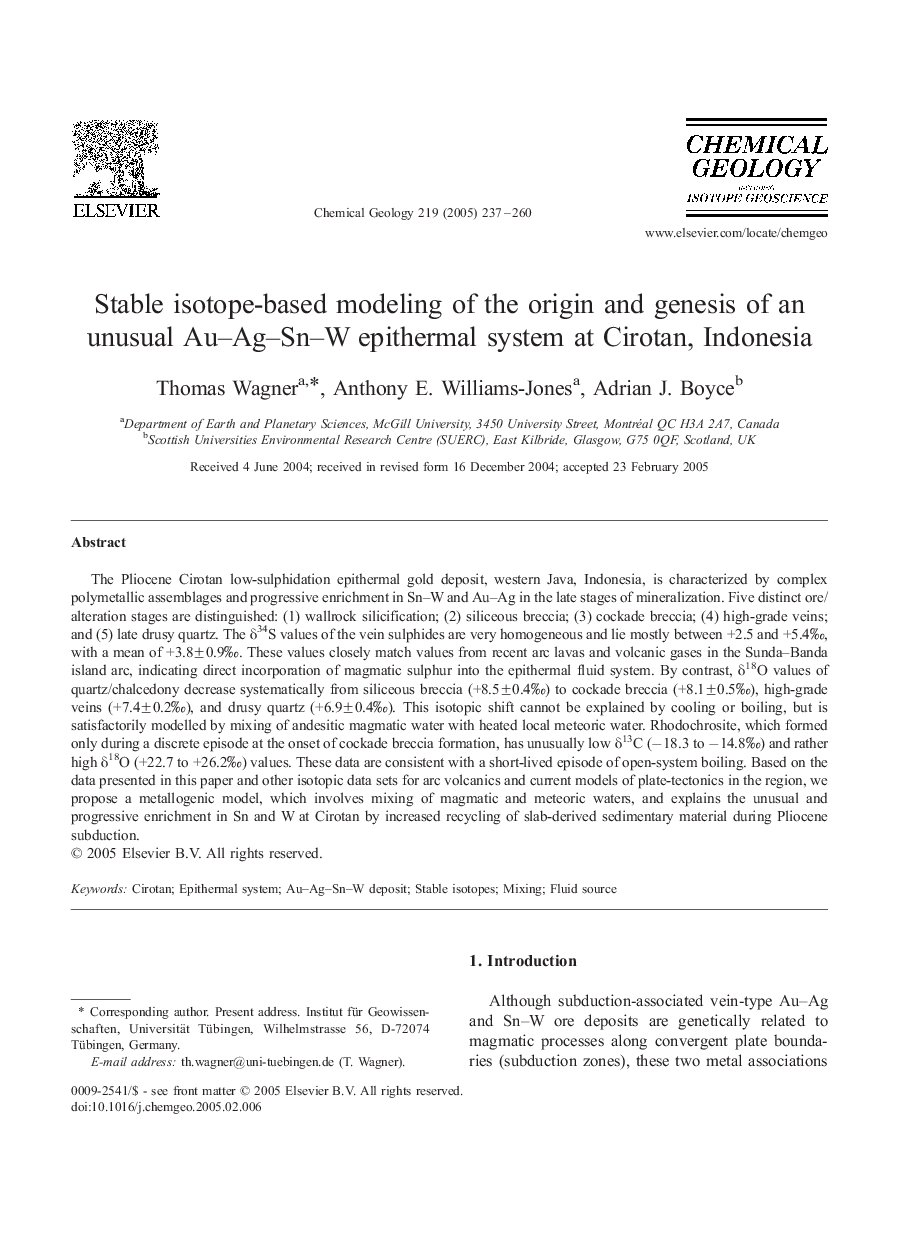| Article ID | Journal | Published Year | Pages | File Type |
|---|---|---|---|---|
| 9528989 | Chemical Geology | 2005 | 24 Pages |
Abstract
The Pliocene Cirotan low-sulphidation epithermal gold deposit, western Java, Indonesia, is characterized by complex polymetallic assemblages and progressive enrichment in Sn-W and Au-Ag in the late stages of mineralization. Five distinct ore/alteration stages are distinguished: (1) wallrock silicification; (2) siliceous breccia; (3) cockade breccia; (4) high-grade veins; and (5) late drusy quartz. The δ34S values of the vein sulphides are very homogeneous and lie mostly between +2.5 and +5.4â°, with a mean of +3.8±0.9â°. These values closely match values from recent arc lavas and volcanic gases in the Sunda-Banda island arc, indicating direct incorporation of magmatic sulphur into the epithermal fluid system. By contrast, δ18O values of quartz/chalcedony decrease systematically from siliceous breccia (+8.5±0.4â°) to cockade breccia (+8.1±0.5â°), high-grade veins (+7.4±0.2â°), and drusy quartz (+6.9±0.4â°). This isotopic shift cannot be explained by cooling or boiling, but is satisfactorily modelled by mixing of andesitic magmatic water with heated local meteoric water. Rhodochrosite, which formed only during a discrete episode at the onset of cockade breccia formation, has unusually low δ13C (â18.3 to â14.8â°) and rather high δ18O (+22.7 to +26.2â°) values. These data are consistent with a short-lived episode of open-system boiling. Based on the data presented in this paper and other isotopic data sets for arc volcanics and current models of plate-tectonics in the region, we propose a metallogenic model, which involves mixing of magmatic and meteoric waters, and explains the unusual and progressive enrichment in Sn and W at Cirotan by increased recycling of slab-derived sedimentary material during Pliocene subduction.
Related Topics
Physical Sciences and Engineering
Earth and Planetary Sciences
Geochemistry and Petrology
Authors
Thomas Wagner, Anthony E. Williams-Jones, Adrian J. Boyce,
